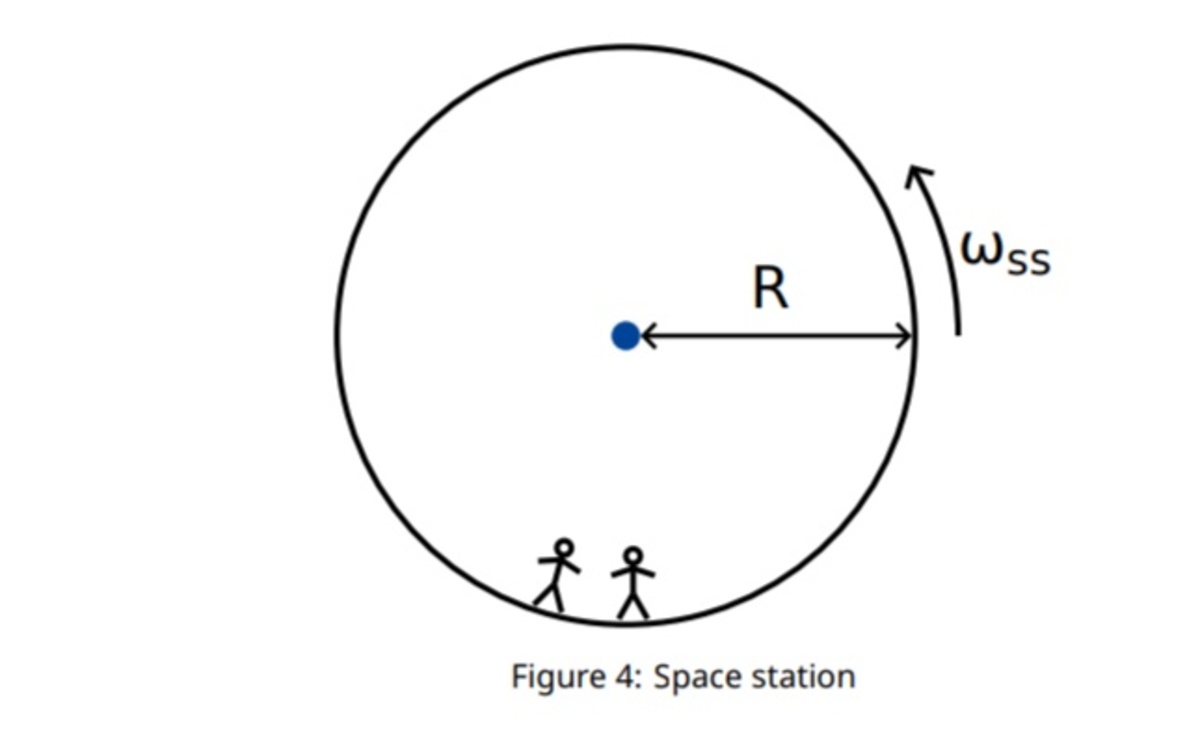Rotating Space Station
For an interstellar space mission,set in the future,an attempt is made to partially compensate for the lack of gravity by uniformly rotating the reasonably long and very heavy cylindrical spaceship , which has diameter of 2R=20m around its symmetry axis . The period of rotation is adjusted so that astronauts feel an earth like gravitational acceleration of g=10.00 at the outer edges of cylinder
 During the journey,an astronaut(point like!) climbs a 5m pole whose floor is the innersurface of the space ship. if the astronaut fell from top of the pole a) How long would he take to fall(in sec) b)How far from the bottom of the climbing pole(measured along the floor) would he hit the floor ENTER THE SUM OF ANSWERS OF (a) AND (b)
During the journey,an astronaut(point like!) climbs a 5m pole whose floor is the innersurface of the space ship. if the astronaut fell from top of the pole a) How long would he take to fall(in sec) b)How far from the bottom of the climbing pole(measured along the floor) would he hit the floor ENTER THE SUM OF ANSWERS OF (a) AND (b)
The answer is 8.5805.
This section requires Javascript.
You are seeing this because something didn't load right. We suggest you, (a) try
refreshing the page, (b) enabling javascript if it is disabled on your browser and,
finally, (c)
loading the
non-javascript version of this page
. We're sorry about the hassle.
This was a fun problem. Commented solution code is attached: